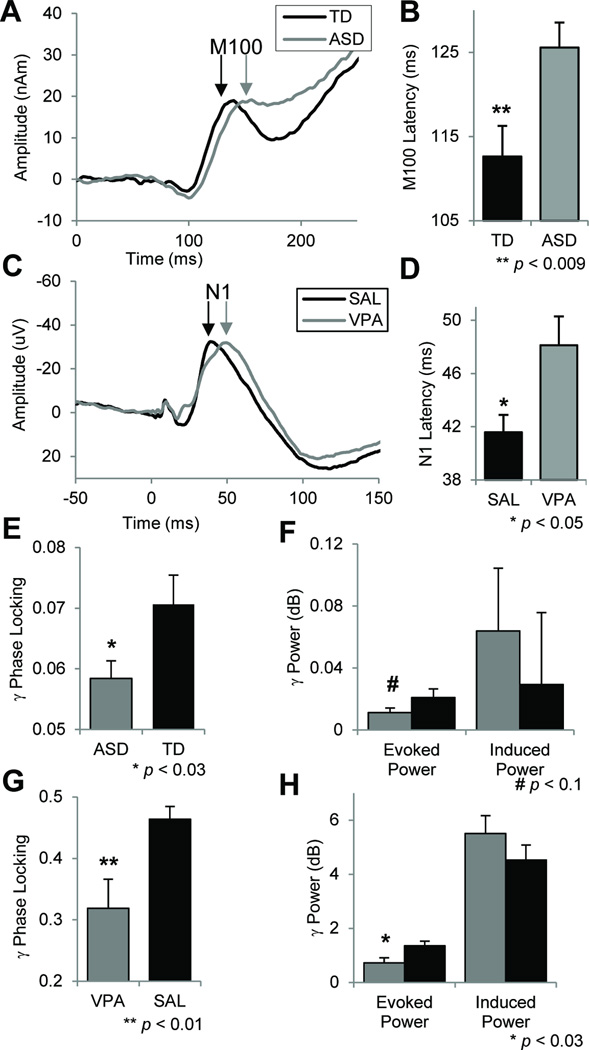Fig 2.
Auditory evoked-responses from clinical and pre-clinical studies in time (A–D) and frequency domains (E–H). A) Grand-average superior temporal gyrus auditory evoked-responses are shown in autism (ASD) and typically developing (TD) groups. B) ASD subjects show a 10% delay in right hemisphere M100 latency. C) Grand-average auditory evoked-responses are shown for mice treated prenatally to valproic acid (VPA) or saline (SAL). D) The VPA group shows a 16% delay in N1 (e.g., M100) latency. E) Transient gamma-band phase-locking (PLF; e.g., intertrial coherence) is significantly reduced in ASD across hemispheres. F) Groups did not differ in evoked (time- and phase-locked) or induced (time-, not phase-locked) gamma power. G) Gamma PLF is reduced in VPA-exposed mice. H) Evoked power was reduced in the VPA group with no difference in induced power. All figures indicate mean ± s.e.m.

